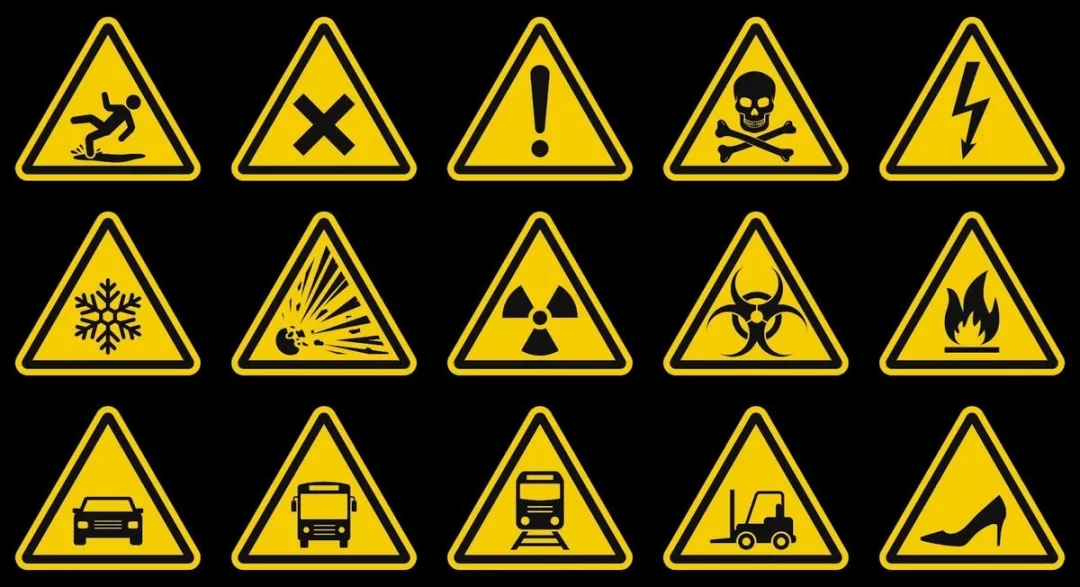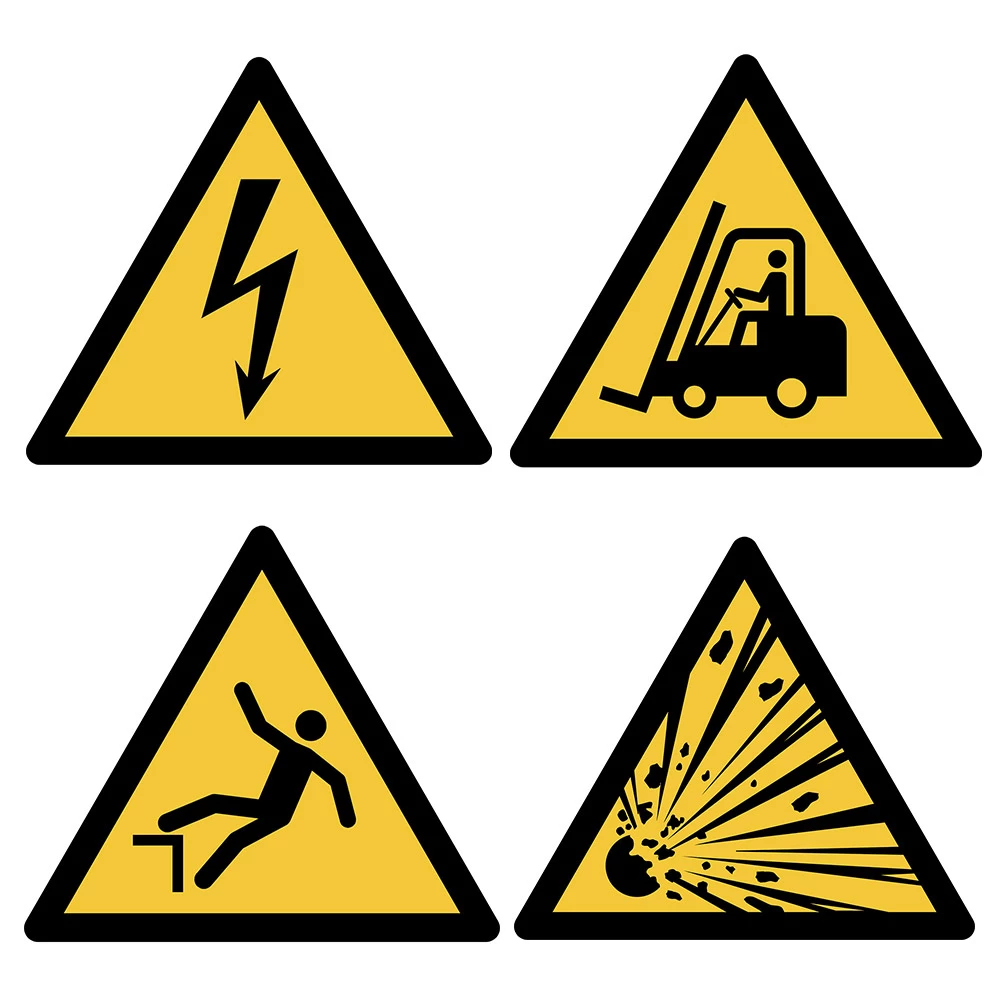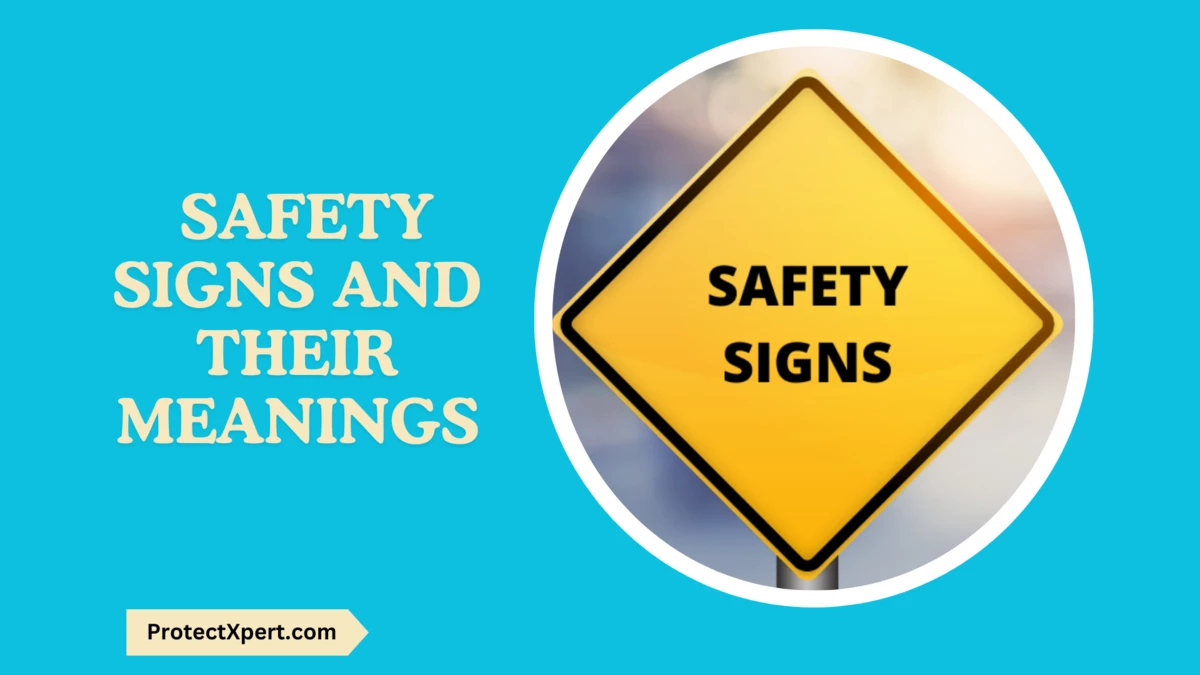25 Important Safety Signs and Their Meanings
Safety signs are required to warn and inform you of the possible risks that can cause serious health issues or injuries. Safety signs are standardized symbols or messages curated to warn or inform individuals.
Using universally recognizable symbols and clear messages through text, safety signs offer immediate insight into possible dangers and the necessary precautions. This article provides important safety signs and symbols as well as their significance.
What are Safety Signs?

Safety signs are pictograms that convey safety-relevant information to people. These signs are labels showing graphics set forth.
By the International Standards Organization (ISO) which are internationally recognized and accepted. This helps ensure the dangers present are comprehended by an increasingly multilingual workforce.
Safety signs play an important role, especially in the area of occupational safety and accident prevention, because they help to prevent accidents or damage to health.
Their usage spans various settings, including workplaces, public spaces, and transportation systems.
The overall goal of safety signs is to communicate safety information that breaks language barriers and can be interpreted globally. Safety signs and warning stickers are vital in today’s business world.
Now different industries are involved and making safety stickers, and each industry has unique standards and requirements. By understanding the types of signs and their purpose, you can determine how you adhere to where they are displayed.
Why Should You Use Safety Signs?
Safety signs play an inevitable role in hazard communication and control. Safety signs can vary in color, size, and shape. You should understand which safety sign you need in your business, as this will depend on the type of business you run.
Here’s why their use is essential:
1. Immediate Recognition
Visual signs transcend language barriers. No matter what language is being spoken or read by someone, a universally recognized symbol will convey an equal message, ensuring immediate comprehension.
2. Clarity in Communication
A well-curated safety sign can convey a message distinctly without the need for verbose explanations. This ensures that the intended safety message is not in vain or misunderstood.
3. Efficiency
In an emergency situation, time is of the essence. Safety signs allow for quick calls to action by providing immediate awareness of hazards or indicating escape routes or means without the delay of reading and processing textual information.
4. Consistency
Safety signs, when standardized, offer a consistent message. It doesn’t matter if you’re in a factory, lab, or public space, the same symbol will indicate the same and equal hazard or instruction, reducing confusion.
5. Space Conservation
Signs can convey deep messages in a small space, making them appropriate for environments where physical space might be limited, such as on machinery, equipment, or narrow corridors.
6. Reinforcing Training
Notwithstanding that many workers or the public have been trained or informed verbally, safety signs serve as constant reminders of the protocols and hazards, reinforcing the importance of safe practices daily.
7. Legal and Regulatory Compliance
A lot of industries and regions have regulations ensuring specific safety signs to maintain a standardized safety protocol.
8. Reducing Accidents
By making possible hazards and safety protocols distinct and clear, safety signs play a prominent role in reducing accidents, injuries, and property damage.
9. Insisting on Safety Culture
The frequent use of safety signs outlines the necessity of safety in a particular environment, promoting a culture where safety is of utmost priority and is valued.

25 Important Safety Signs and Their Meanings
Safety signs are very important in communicating hazards and precautions to people in various environments. Here are 25 important safety signs and their meanings:
1. Prohibition Sign
The prohibition signs give information about dangerous behavior, it indicates; stop, shutdown, emergency cut-out devices, or evacuation.
It ensures quick comprehension even if the viewer doesn’t take the time to read the accompanying text. They are round-shaped with a black pictogram on a white background or red edging with a red diagonal line.
2. Warning Sign
Warning signs have a yellow background. It tells you to be careful, to take precautionary measures, and also warns about nearby hazards.
These warning safety signs are usually accompanied by some text explaining the warning in more detail. The sign does have a triangular shape, a black pictogram on a yellow background, and black edging.
3. Mandatory Sign
The mandatory sign informs you about a specific behavior or action depending on the environment or workspace you find yourself in. It’s always round in shape with a white pictogram on a blue background.
4. Emergency Sign
Emergency signs always have a green background pasted on doors, exits, escape routes, equipment and facilities, etc. They represent an immediate call to action. It is rectangular or square with a white pictogram on a green background.
5. Flammable Sign
Indicates the presence of items that can easily ignite, flammable signs often incorporate the picture of flames.
6. Explosive Signs
Draws attention to the possibility of fire detonating. It’s a pointer that such an environment is prone to explosion if materials that ignite fire are activated.
7. Fire Extinguisher Signs
Signs displaying the picture of a fire extinguisher provide clear guidance on where these tools are located, enabling faster response times in a situation of a fire outbreak. It could indicate a fire alarm call point or firefighting equipment.
8. Biohazard Signs
They denote that biological agents like bacteria, viruses, or other pathogens hazardous to human health are in place. Environments such as laboratories, medical facilities, or places storing bio-waste typically use these signs.
9. High Voltage Signs
They warn individuals about live electrical materials, equipment, or wires that carry a strong electric current, which can lead to electrocution if not properly used.
10. Radioactive Signs
These signs are common in nuclear industries, certain medical rooms with radiological instruments, or research labs employ these signs.
11. Toxic/Poison Signs
Represented by a skull pictorial indicates the presence of harmful substances that if consumed can lead to death. Can be found in storage spaces or laboratories.
12. Wear Eye Protection Signs
Are displayed at workshops, laboratories, or sites where there’s a possibility of eye injury either from chemicals or objects.
13. Wear a Hard Hat Sign
Especially in construction sites where there are dangers like heavy equipment falling or moving, the sign indicates the need for a helmet.
14. Wear an Ear Protection Sign
The sign showing an ear symbol is a direct reminder to use protective measures, such as earplugs or earmuffs.
15. Emergency Exit Signs
Mostly illuminated, this sign represents a person moving toward a door, serving as a guide, showing the most direct escape route out of a facility.
16. First Aid Signs
The sign bearing a white cross, displayed on a green background, points individuals toward first aid kits or rooms. First aid signs are not always mandatory but can be helpful depending on your work setting.
These are environments where they can find essential medical tools and supplies, from bandages to defibrillators like in the hospital.
17. No Smoking Signs
As much as smoking is detrimental to one’s health, the smoking sign indicates a fire risk. This is particularly crucial in areas where flammable materials are stored or where there’s a heightened risk of fire.
18. Forklift Operating Area Signs
The sign indicates a forklift operation warning individuals that they are entering zones where there are heavy machines.
19. Under Construction Signs
Construction zones feature lots of potential hazards, from moving equipment to exposing wiring. These sign serves as a heads-up for passerby, suggesting extra caution and alertness to avoid accidents or injuries.
20. Emergency Assembly Point Signs
Indicates a safe gathering point for everyone making sure everyone can converge at a spot for specific information.
21. Oxidizer Signs
The sign indicating the presence of oxidizers warns of substances that can provide oxygen to fuel fire ignition. It’s an important sign in the chemical storage or handling environments, reminding workers to avoid any ignition sources.
22. Restricted Area Signs
Some areas are out of bounds from just everyone. It separates zones off-limits to unauthorized personnel, often due to safety issues, sensitive information, or specialized equipment.
23. Eye Wash Signs
This indicates access to eye rinsing equipment. This sign shows individuals to stations where they can swiftly flush their eyes, reducing the damage from harmful substances that may have come in contact with their eyes.
24. Wet Floor Signs
Slip and fall incidents are very common and can lead to severe injuries. It informs individuals to tread cautiously, avoiding potential accidents on wet surfaces.
25. Personal Protective Equipment (PPE) Signs
The PPE sign is a typical reminder for workers to put out necessary safety equipment, these instruments can be gloves and masks, aprons, and safety shoes, depending on the type of job and the hazards faced.
Conclusion
No matter where you’re working, you’ll be able to understand the potential hazards you face simply by looking at the posted signs.
These 25 signs, possess unique information, and act as a compass for navigating us through various scenarios, ensuring our well-being and overall safety.
READ ALSO!!!




